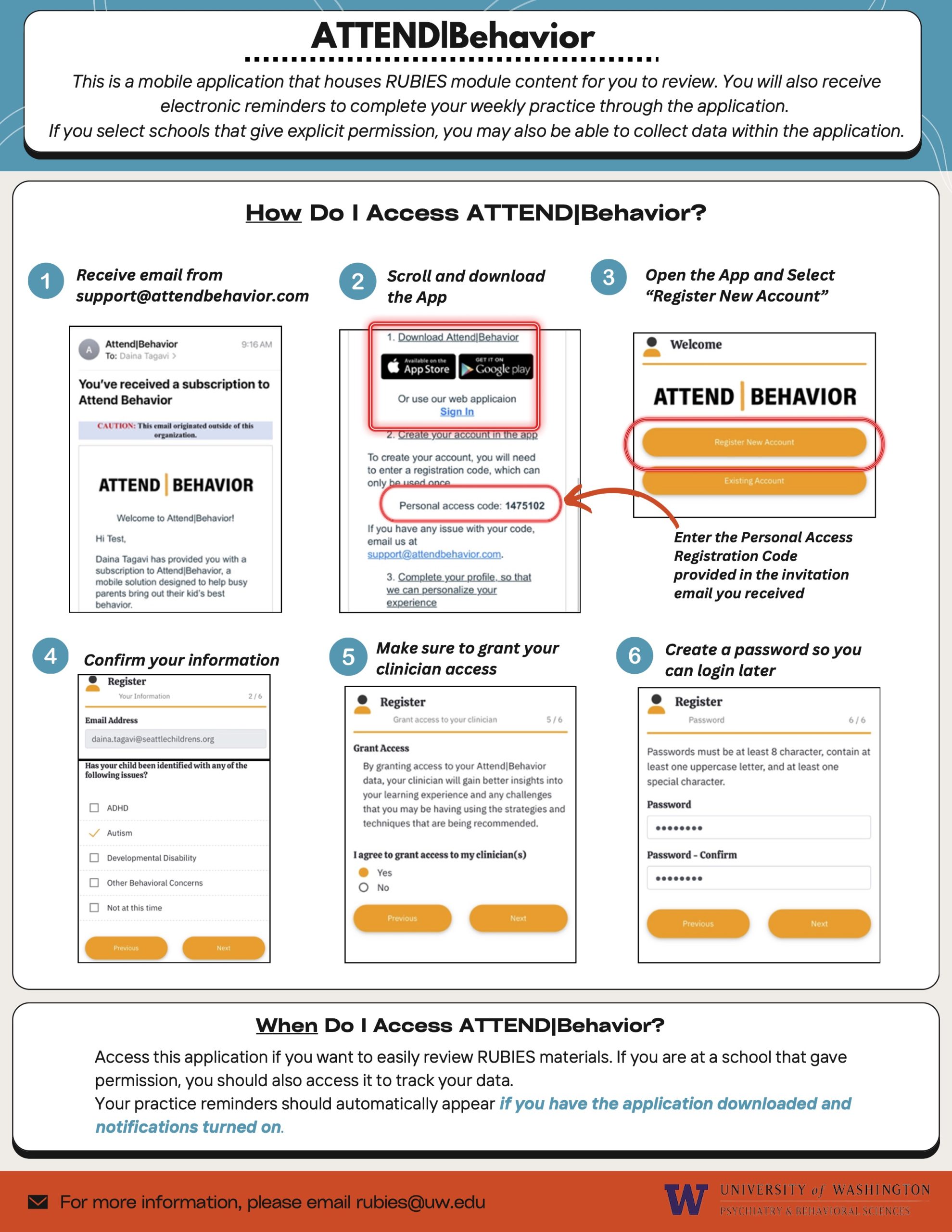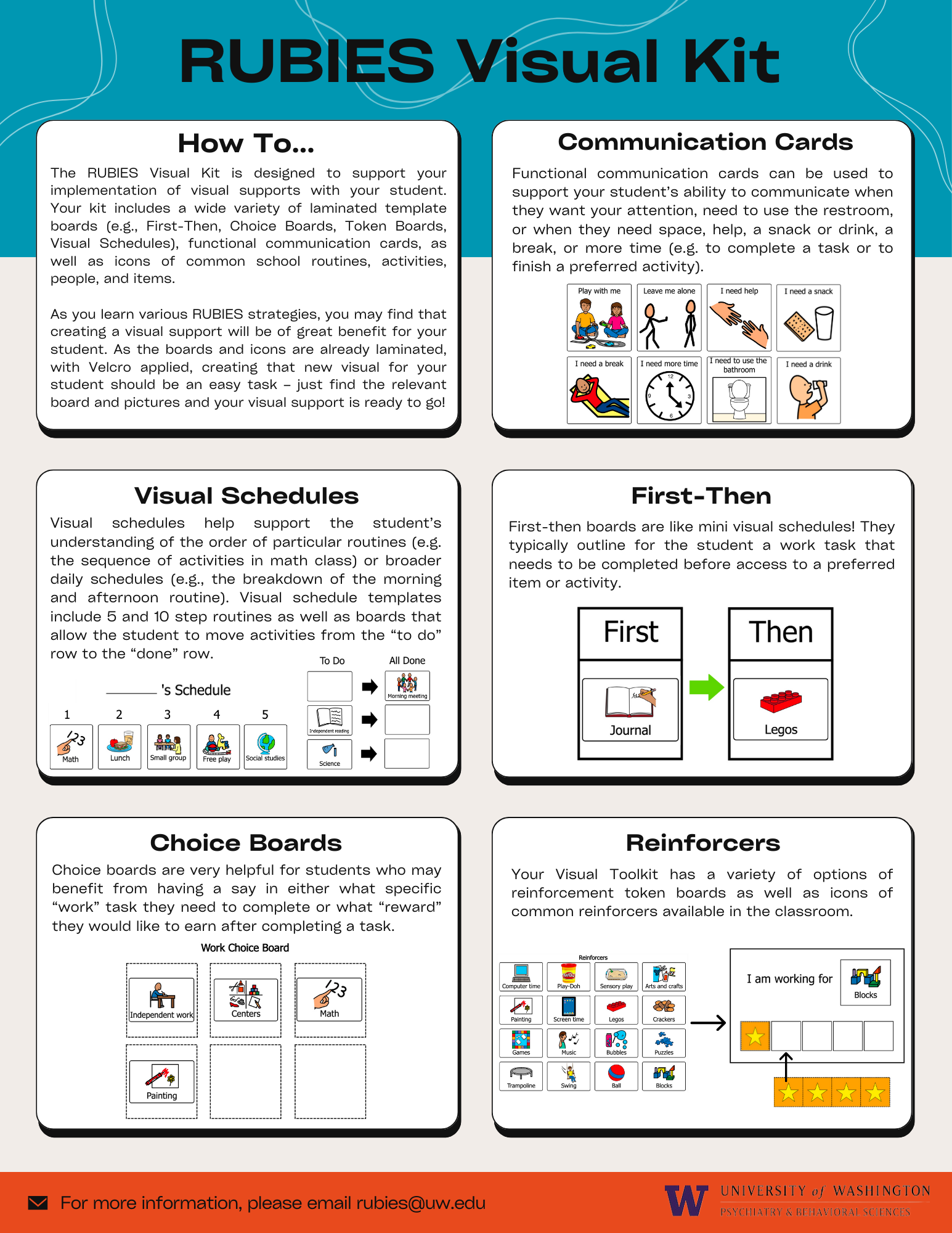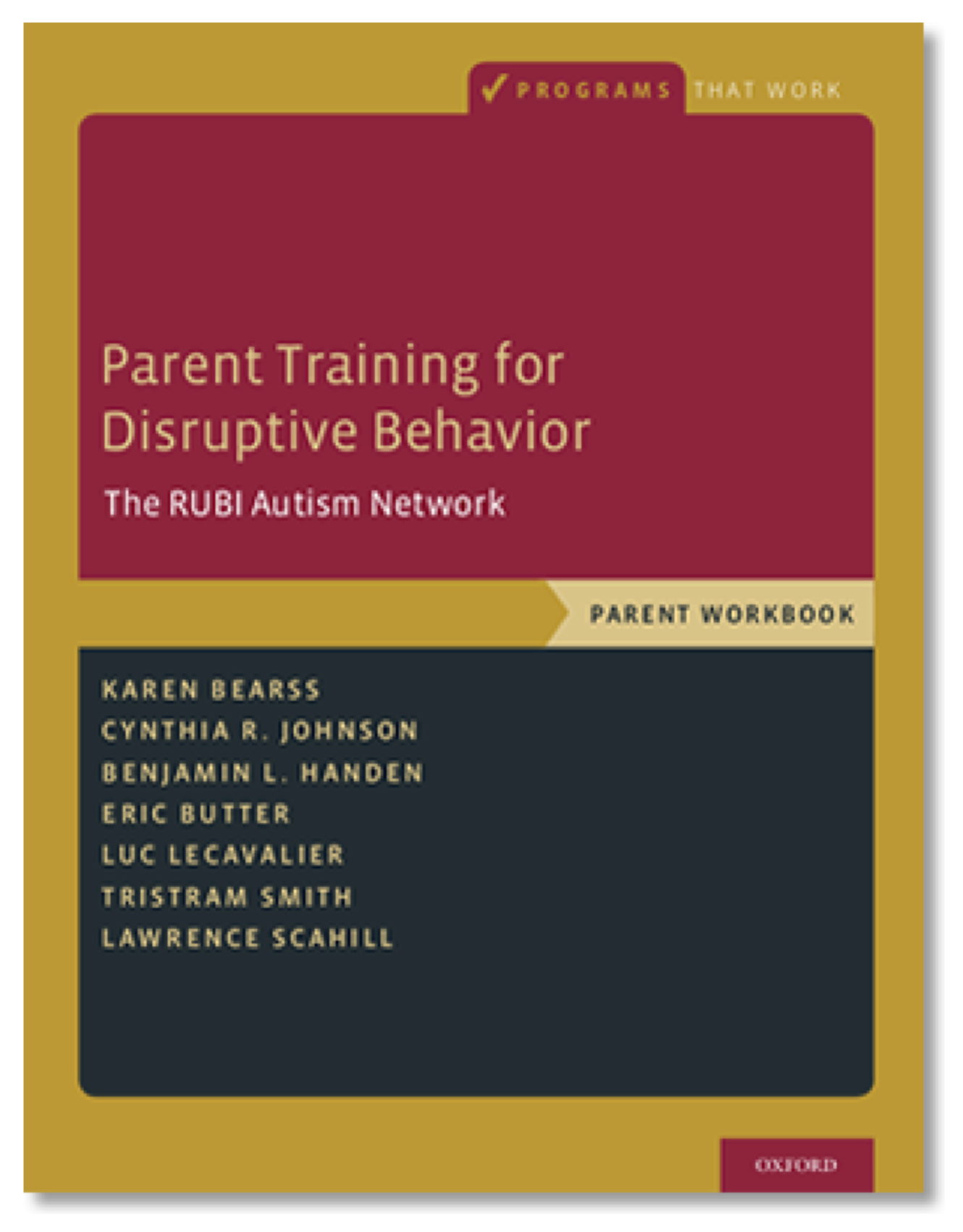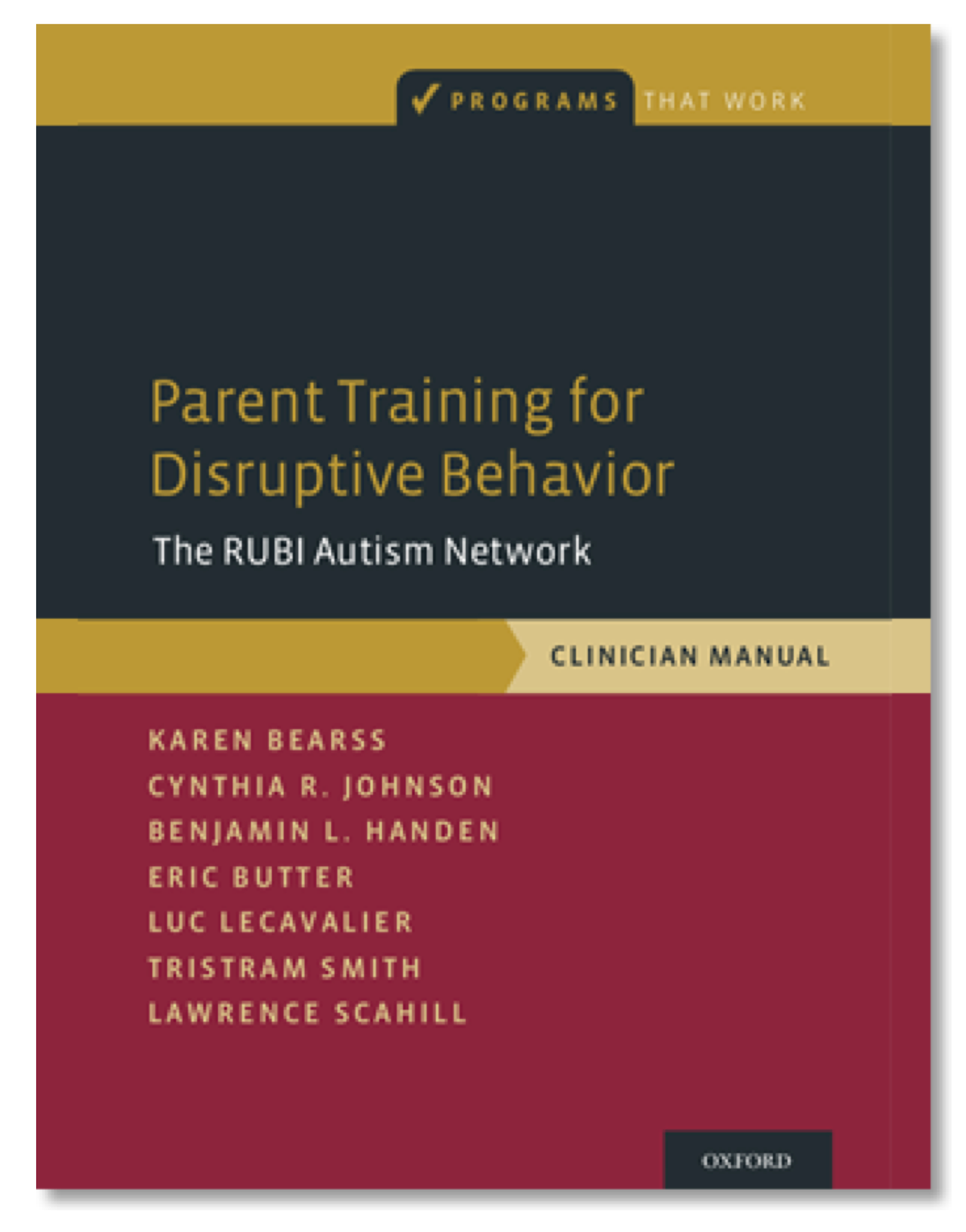R34 – Redesigning Research Unit on Behavioral Intervention (RUBI) for Autistic Children in Educational Settings
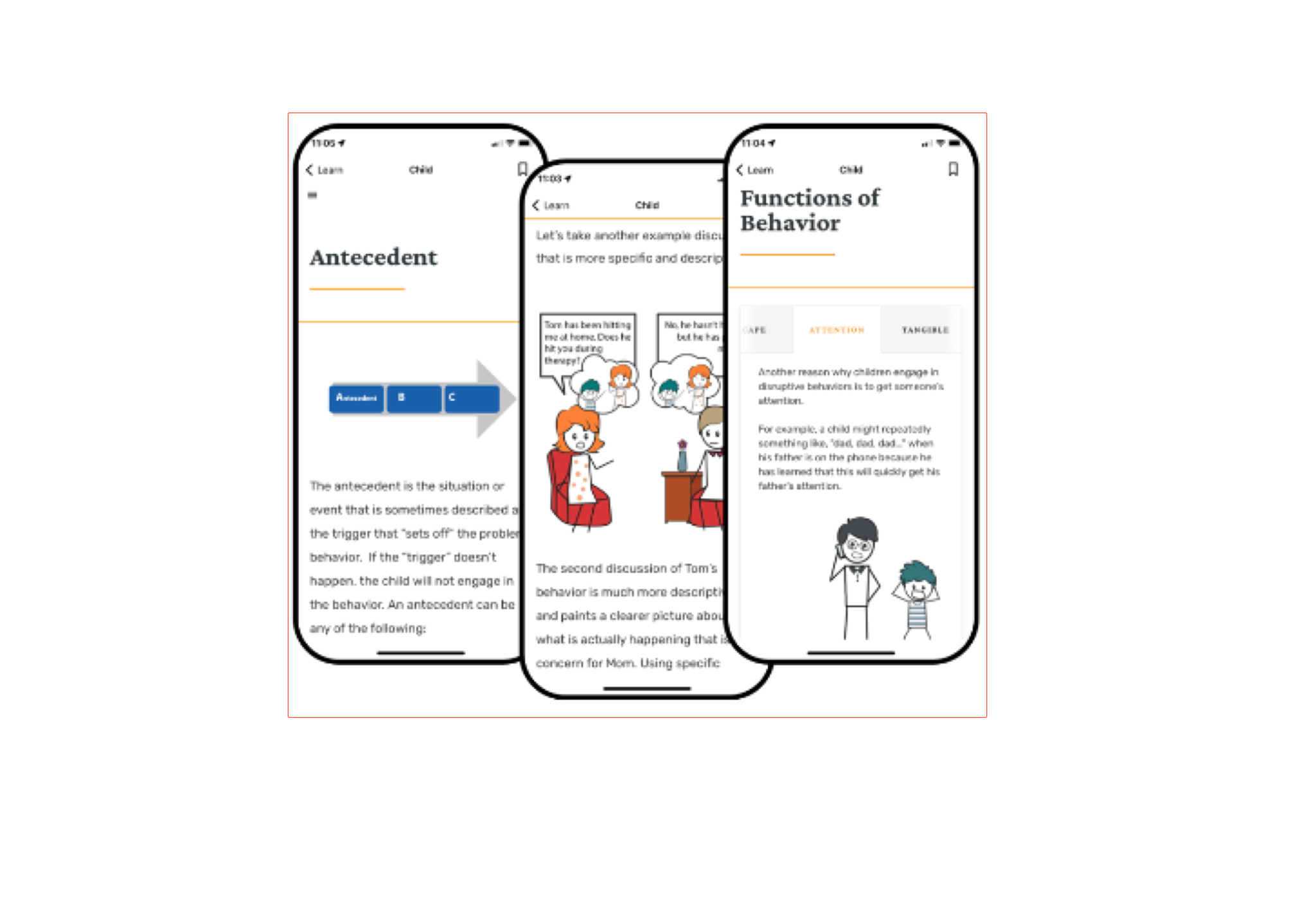
Principal Investigators
Jill Locke, PhD, Associate Professor, University of California, Los Angeles | Research Associate Professor, Department of Psychiatry & Behavioral Sciences, University of Washington
Karen Bearss, PhD, Vice President, Caregiver-Mediated Solutions, Catalight; Affiliate Associate Professor, Department of Psychiatry & Behavioral Sciences, University of Washington
Project Description
While the evidence base has grown for interventions for autistic youth, few of these interventions are being implemented in public schools, the primary setting in which autistic children receive intervention, due to misalignment of existing implementation strategies with that setting. There is a need for contextually appropriate implementation strategies to be used to support lay providers in learning and using these interventions. This three-year project will apply the local Discover, Design, Build, and Test (DDBT) framework to redesign and then pilot a multifaceted implementation strategy to support educator use of a behavioral skills evidence-based intervention, Research Unit on Behavioral Intervention (RUBI) for Educational Settings (RUBIES), for autistic children in public schools.
This project started during the first iteration of the UW ALACRITY Center as an R03 pilot project. The current project aims to: 1) identify targets for redesign from implementation strategies currently used to support RUBI clinician implementation to maximize educators’ RUBIES use in schools; 2) iteratively adapt the existing RUBI implementation strategies; and 3) test the newly-redesigned RUBI in Educational Settings (RUBIES) implementation strategy compared to the un-adapted RUBI implementation strategy on DDBT mechanisms (engagement, usability, appropriateness), proximal implementation outcomes (adoption, fidelity, adaptation, reach), and child behaviors (disruptive behavior, functioning, top problems) with 80 educators supporting 80 elementary-school autistic children. Successful completion of the proposed study will result in a refined set of implementation strategies to support RUBIES use among lay providers in public schools and has the strong potential to inform how evidence-based practices can be implemented in schools more broadly. Knowledge gleaned from this study has the potential to improve the quality of life for autistic children served in public schools across the country.
| Setting | Elementary schools |
| Population | Autistic students, educators |
| Timeline | April 2023 to April 2026 |
Intervention and/or Implementation Strategy Designed or Redesigned
| Intervention | RUBIES: low-intensity manualized intervention for autistic children with co-occurring externalizing behaviors, originally developed for parents and redesigned for educators |
| Implementation Strategy | RUBIES-Team Implementation Strategy: emphasizes team collaboration and offers supplemental RUBIES resources |
Anticipated Impact
Considering the wide variability in the expression of autism spectrum disorders (ASD) and the need for highly individualized programs to meet children’s diverse needs, one of the most significant challenges that educators face is the delivery of evidence-based interventions (EBIs) targeting autistic youth in public schools. Routine EBI use in educational contexts is limited, which is immensely concerning as inconsistent or limited EBI implementation impedes ability of autistic youth to benefit from EBIs, perpetuates poor long-term outcomes, and contributes to the misallocation of limited school resources. Capitalizing on lay providers to learn and use EBIs has the potential to reach autistic youth in their primary service setting in a cost-efficient manner and thus likely could have a major public health impact.
Project Publications
Iterative redesign of a caregiver-mediated intervention for use in educational settings
Authors
Bearss, K., Tagavi, D., Lyon, A. R., & Locke, J.
Abstract
Teachers often report concerns about behavior challenges in their students with autism spectrum disorder (ASD) in the school setting. Furthermore, teachers often report that they do not have adequate training in how to manage these challenging behaviors effectively. The RUBI program is an intervention initially developed for parents of children with ASD and co-occurring challenging behavior in clinic settings. The present project used school staff input to systematically redesign RUBI to be used with educators in schools. School staff gave input at multiple stages of development to ensure the adapted intervention was appropriate to use in a school setting. Responses were coded and analyzed to identify strengths and weaknesses of the RUBI manual in schools and adaptations were made accordingly. Scores of how appropriate, possible, likable, and usable RUBI would be in schools rose after the intervention was redesigned. The redesigned RUBIES manual may give school staff the tools they need to manage disruptive behaviors. In addition, collaborating with providers over multiple stages to redesign established interventions for new contexts may be a promising way to help bring research tools to practice in the future.
Announcements
We are recruiting elementary school educators and caregivers of autistic students (ages 5-12) to participate in the RUBIES study.
Anyone interested in learning more can watch the informational video below and contact the study team at rubies@uw.edu.

